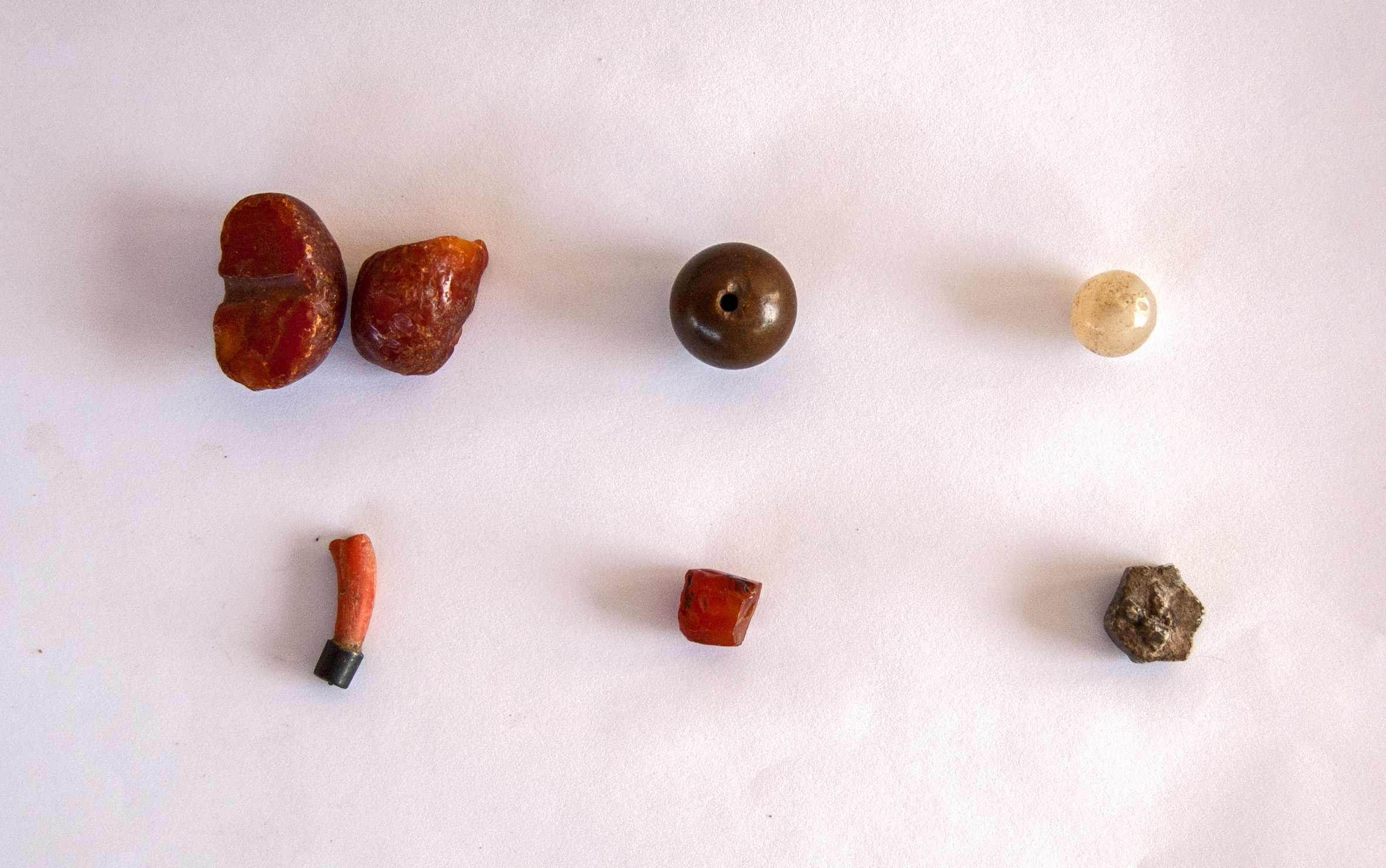Basque ethnography at a glance

This is a collection of small stones from the Valley of Carranza (Bizkaia) credited formerly with healing powers.
Nicolás Vicario, in his work El Noble y Leal Valle de Carranza [The Noble and Loyal Valley of Carranza] wrote about them: “Simple folk give credulity to the curative virtue of some stones or miraculous beads that belong to a resident from Ahedo named Manuel María Garay, one of which is used by involuntary childless women to conceive, and to prevent miscarriage and a difficult delivery; another of such stones helps make abundant breast milk and ward off breast conditions; and there is another stone against eye and infant disease. The owner of the mentioned stones relates a host of cures and surprising results obtained by diverse people who borrowed them from him and others who still keep them”.
Upon his grandfather’s death in the mid 1980s, the stones became the property of Fe Garay, who lived in the so-called Casas de Atrás, literally “Houses from Behind”, in Ahedo, and said the following about them:
It is a set of six stones:
![]() The Virgin’s holy rosary bead
The Virgin’s holy rosary bead
Believed to regulate women’s flow of blood and avoid miscarriage.
![]()
Piece of red coral
Worn by new mothers to maintain breast milk.
![]()
Reddish stone
Worn to head off headaches.
![]()
Rosary bead
Used as a remedy against eye disease and to preserve eyesight.
![]()
St Casilda’s stone
Fertility charm worn by women with difficulties getting pregnant.
![]() Coral stone
Coral stone
Originally a single piece, one of the many women who borrowed it broke it into three, kept a piece and returned two. As the rosary relic, women wore it to prevent miscarriage.
In those former times women showing symptoms related to the healing powers of the stones would be advised to look for and pick the charm that best suited them.
A neighbour from Cezura and practising midwife in the Valley who possessed knowledge of the problems and disorders experienced by pregnant women was in charge of delivering the stones to whoever needed them and returning them to their owner.
The recipient of the stone was supposed to place it inside a small bag or pouch and wear it underneath her clothing until its intended effect was achieved. The same woman might wear more than a stone.
Miguel Sabino Díaz – Etniker Bizkaia – Etniker Euskalerria Groups
Translated by Jaione Bilbao – Language Department – Labayru Fundazioa
Photographs by the author.

